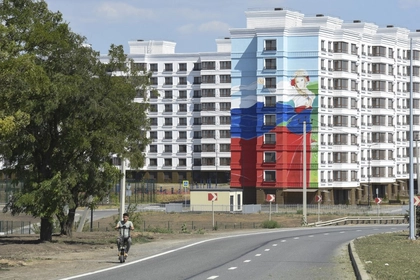The Russia-Ukraine war has showcased Ukraine’s remarkable ability to resist a significantly more powerful adversary despite its limited resources. Ukraine’s defense efforts have combined innovative strategies, harnessing both domestic ingenuity and foreign support to counter a foe superior in military force and technology.
While certain aspects of warfare remain unchanged – such as the necessity of industrial capacity and raw firepower for entrenched battles – the war has prompted a re-evaluation of many traditional military concepts.
JOIN US ON TELEGRAM
Follow our coverage of the war on the @Kyivpost_official.
Ukraine has become a global testing ground for various weapons and technologies, offering valuable lessons on what works and what doesn’t. Drones, for example, have become indispensable, with both sides utilizing them to enhance their battlefield operations. This continuous adaptation and pursuit of technological breakthroughs drives the larger-scale evolution of warfare.
Although Ukraine heavily relied on Western aid during the early years of the war, it has increasingly recognized the need for self-reliance and homegrown innovation.
Ukraine continues to lead by example, maximizing its limited resources to counter Russia by leveraging asymmetrical warfare and pioneering drone innovations. Civilians have played a crucial role, building supply chains to sustain the war effort, while groups like the North Atlantic Fella Organization (NAFO) have fought Russia in the information war.

Ukraine’s Usyk Beats Fury in Heavyweight Championship Rematch
Meanwhile, Russia has not only waged a physical war against Ukraine but has also engaged in hybrid warfare, aimed at undermining Western support.
This war has expanded from cyber realms across Western countries to the physical battlefields of Ukraine. In response, decentralized efforts, such as Ukraine’s IT volunteer army, have emerged to conduct cyber warfare against Russia.
The lack of a clear plan for Ukraine’s battlefield victory has emboldened Russia, reinforcing its belief in achieving complete dominance. This has attracted greater support from adversaries like China, further fueling the conflict.
China’s and North Korea’s increasing involvement highlights the global nature of the war, with nation-states worldwide becoming invested in its outcome. In turn, Ukraine has begun taking the fight beyond its borders, targeting Russian interests in Africa and the Middle East.
As the Biden administration hesitates to provide Ukraine with the decisive support needed, Ukraine may resort to riskier strategies to break the stalemate and counter Russia’s war of attrition.
Artificial Intelligence (AI) is playing an increasingly significant role on the battlefield, enhancing drone targeting and allowing autonomous systems to have a greater impact. Over time, the battlefield is becoming a clash of algorithms.
As the world becomes more digitized, technology’s influence on warfare will only grow. Cheap drones have already transformed the battlefield, accelerating both sides’ need to adapt and develop new technological advancements.
Ultimately, the Russia-Ukraine war has highlighted the need for NATO countries to embrace and adapt to the technological advancements seen in Ukraine, many of which are emerging from off-the-shelf commercial technologies. NATO must prepare for the future of warfare, where the first large-scale drone war is rapidly transitioning into the first AI-driven war.
David Kirichenko is a researcher and expert specializing in autonomous systems, cyber warfare, irregular warfare, and military strategy. His analyses have been widely published in outlets such as the Atlantic Council, the Center for European Policy Analysis, the Irregular Warfare Center, Military Review, and The Hill, as well as in peer-reviewed journals. His work has been cited in publications like the Journal of Advanced Military Studies and by the Asymmetric Threat Analysis Center at the University of Maryland, among others.
This article is the Executive Summary to a Report by the author published this week by the Henry Jackson Society in London – Military Lessons for NATO from the Russia-Ukraine War: Preparing for the Wars of Tomorrow. It is reprinted with the author’s permission. See the original here.
The views expressed in this opinion article are the author’s and not necessarily those of Kyiv Post.
You can also highlight the text and press Ctrl + Enter






